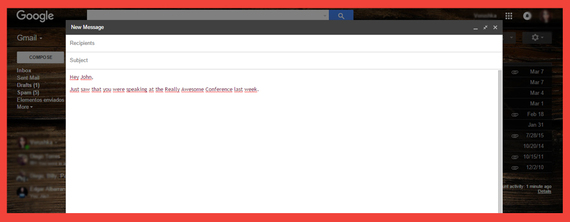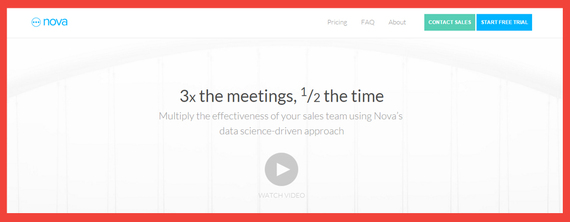We all know what bad cold emails look like: they're long, wordy, and self-absorbed.
Emails that intrigue, on the other hand, are personal, friendly, and inviting.
Wanna learn how to write an incredible cold email that actually gets your prospect to respond? Check out some awesome advice we learned from Will Dinkel, co-founder of nova.ai.
The Anatomy of Good and Bad Emails
You probably know that in sales, custom messaging wins out over blanket pitches every time. If people know you've taken the time to learn about them, they're generally willing to hear what you have to say.
In email, there are good sales and bad sales. Again, the elements of bad sales techniques are easy to spot:
- Only talking about your own business/product
- Shoving it down their throat
- Long-winded emails
- 10 emails over the course of two weeks
You get the picture. Unfortunately, sales is gravitating to a "more" philosophy: how do I send more messages, be more productive, more, more, more?
Then you have good sales techniques, which are the same universally. The salesperson who takes the time to understand you, is concise, and does more listening than talking, wants to understand your business.
What does a good email look like?
- It's empathetic
- It takes the audience into account
- It's short (don't expect somebody to be reading a 2,000 word essay in your first or second interaction)
- It asks the right questions that can move the conversation forward
For the subject line, Will suggests colloquial language similar to what you'd send to a friend. The subject should be 10 characters or less (if you can help it) and conversational. Don't make it look like the title to a book or magazine.
In the body, offer a quick salutation, then make a personal connection quickly. Package your message in a couple of relevant, quick, punchy paragraphs. Massive blocks of text are a huge turnoff. So is special formatting that lights up like a Christmas tree, so keep the color and font nice and simple.
Some say the best emails are between 75-100 words, but Nova (Will's company) measures emails in height. They say that an email on your screen should visually be about 4-5 inches tall. It's a strange metric, but it works.
The Biggest Mistake in Cold Emailing
The biggest mistake people make in cold emailing (other than writing too long and not breaking up paragraphs) is overestimating the size of the ocean.
Sales teams think they can cast a huge net and just endlessly fish, sending thousands of emails a day without running out of prospects. But if you adopt that philosophy, here's what you'll discover:
- It creates negative impressions. More than likely, you can name the companies in your area who are notorious for blasting you with huge emails. It's bad branding.
- You get spam blocks. If they get an obviously impersonal, not-just-cold-but-freezing email, they'll block you.
- There's a limited number of truly targeted accounts. As a company, you might have only 10,000 potential customers. If all your reps are just blasting those people with email, that can hurt your ability to get into those accounts: short-term and long-term.
So, How Do You Make Every Cold Email Count?
You make every email count by making it personal.
Cold emails are similar to meeting a person at an event: if you've done some research and found some relevant things to bring up with them, they'll probably listen. A tool like Nova helps you personalize cold emails by automating the answers to three main questions:
- This person presumably works for a company, so what's the company's context? Any interesting recent events? A big product launch? Are they going to be present at an upcoming conference? If they're a private company, did they just finish a big funding round?
- On a personal level, do you have anything in common? Do you share any past geography or education? Do you have shared interests, even unrelated to work (e.g., hiking, sports teams)?
- What's something interesting about the person you're talking to? Are they a prolific publisher of content? Do they run a podcast? Are they an inventor with several patents?
- If you really want to talk to somebody, they're going to expect you to have done some research. Whether you use a tool like Nova or manually find the information, personalized messaging will always give you a leg up over the competition.
(Note: You can try Nova's free trial to see if it works for you.)
Conclusion
It's never too early to think about how you're going to scale your processes and team. (Click to tweet)
In the same way an entrepreneur has to be aware of the company's vision, you have to be aware of your sales team's. As you grow, your emails need to stay personal--or they'll suck. Be laser-focused with your branding and targeting.
The last thing you want is to get to a certain size, then realize you need to change your ways.
You can find the interview that this post was based on, and many more, by subscribing to the B2B Growth Show on iTunes.
___________________________________________________________
James Carbary is the founder of Sweet Fish Media, a done-for-you business development service that guarantees new relationships between B2B companies and their ideal clients. James also co-hosts the B2B Growth Show: a podcast dedicated to helping B2B executives achieve explosive growth.



